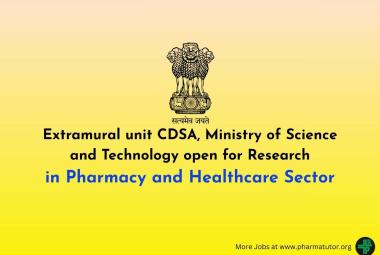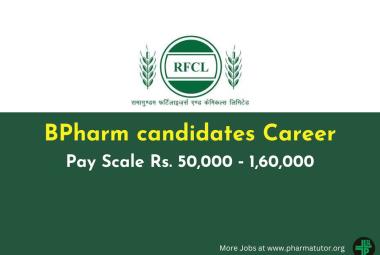SOMSHUVRA BHATTACHARYA, BINOY DAS, PALLAB SARKAR,
4th YEAR, Department of Pharmaceutical Technology,
Gurunanak Institute of Pharmaceutical Science and Technology, Kolkata
[adsense:336x280:8701650588]
INTRODUCTION
Diabetes is a chronic disease that occurs when the pancreas does not produce enough insulin, or when the body cannot effectively use the insulin it produces. Hyperglycaemia, or raised blood sugar, is a common effect of uncontrolled diabetes and over time leads to serious damage to many of the body's systems, especially the nerves and blood vessels.
A popular traditional herbal supplement used as an antidiabetic phytotherapy is Lagenaria siceraria
OBJECTIVE
The Aim of the present study was to evaluate the Antidiabetic activity of Lagenararia siceraria pulp and seed extract on Normal and Alloxan induced diabetic rats
Plant profile
|
Kingdom: |
Plantae |
|
(unranked): |
Angiosperms |
|
(unranked): |
Eudicots |
|
(unranked): |
Rosids |
|
Order: |
Cucurbitales |
|
Family: |
Cucurbitaceae |
|
Genus: |
Lagenaria |
|
Species: |
Siceraria |
Synonyms : calabash, bottle gourd
Biological Source:
Parts used: Pulp of fruits and seeds
Scientific name : Lagenaria siceraria or Lagenaria vulgaris
Family : Cucurbitaceae\
Chemical Constituents
*Vitamin C, Carotene, Vitamin B-complex
*Triterpenoid Cucurbitacins
*Flavone C-glycosides
*Pectin
*Saponins
*Essential fixed oils
Uses
Antioxidant
Immunomodulatory effects
Diuretic effects
Antihyperlipidemic effect
Cardio protective activity
Analgesic
Anti-Inflammatory activities
Hyperglycemia and Lipid Peroxidation
Phytochemical Screening: Various phytochemical tests were carried out. The LSPE was screened for presence of specific phytochemical constituents.
Animals:Experiments were conducted on adult albino female rats (110-185g).
Experimental Design:
Group Division:
Group A : Normal Control .
Group B : Alloxan control (100mg/kg of body weight)
Group C : Alloxan Monohydrate (100mg/kg of body weight) + LSPE (250mg/kg of body weight)
Group D : Alloxan Monohydrate (100mg/kg of body weight) + LSSE (250mg/kg of body weight)
Induction of Diabetes: Hyperglycemia was induced by a single i.p. injection in dose of 100 mg/kg of body weight of alloxan monohydrate in distilled water
Treatment Schedule: The very first day the LSPE and LSSE are fed orally every day as per their doses (250mg/kg) body weight. Body weights (by animal weighing balance) are measured on 0th and 8th day and blood glucose levels were estimated on 8th day of the treatment. On the 8th day, blood sample was collected from overnight fasted rat by one touch glucometer under mild chloroform anesthesia for blood glucose estimations.
Table.2. Effect of LSPE and LSSE on Alloxan induced rats on the basis of Blood Glucose level in different group:
|
Kingdom: |
Plantae |
|
(unranked): |
Angiosperms |
|
(unranked): |
Eudicots |
|
(unranked): |
Rosids |
|
Order: |
Cucurbitales |
|
Family: |
Cucurbitaceae |
|
Genus: |
Lagenaria |
|
Species: |
Siceraria |
RESULTS OF PHYTOCHEMICAL SCREENING
|
PHYTOCONSTITUENT AND THE CORRESPONDING TEST CONDUCTED |
OBSERVATION |
CONCLUSION |
|
CARBOHYDRATE (MolischTest) |
Deep violet colourring appears |
Present |
|
FLAVONOID (Alkaline reagent test) |
Intense Yellow colourformed on addition of NaOHwhich turns colourlesson addition of dilute acid |
Present |
|
TANNIN (Ferric Chloride Test) |
Colourremains unchanged |
Absent |
|
ALKALOID (Mayer’s Reagent test) |
Cream colouredprecipitate obtained |
Present |
|
AMINO ACID (NinhydrinTest) |
Violet colourappears |
Present |
|
SAPONIN GLYCOSIDE |
Stable froth formation observed |
Present |
Table 1. Effect of LSPE and LSSE on Alloxaninduced rats on the basis of Body weight
|
Group |
Treatment |
Body Weight (gm) |
|
|
0 day |
8th day |
||
|
A |
Normal Control |
122.5 ± 12.5 |
122.5 ± 12.5 |
|
B |
Alloxan Control |
155.0 ± 25 |
125.0 ± 20.16 |
|
C |
Alloxan+Treated(LSPE ) |
151.6 ± 16.6 |
155.0± 25 |
|
D |
Alooxan+Treated(LSSE ) |
135.0 ± 14.43 |
145.0 ± 14.43 |
Table.2. Effect of LSPE and LSSE on Alloxaninduced rats on the basis of Blood Glucose level in different group:
|
Group |
Treatment |
Fastnig blood glucose level (mg/dl) |
|
|
0 Day |
8thDay |
||
|
A |
Normal Control |
70.0 ± 2.26 |
70.0 ± 2.26 |
|
B |
AlloxanControl |
210.0 |
198.0 ± 4.08 |
|
C |
Alloxan+Treated (LSPE) |
210.0 |
106.5 ± 28.5 |
|
D |
Alloxan+Treated (LSSE) |
210.0 |
89.33 ± 15.37 |
Comparative study of our experimental result with that of standard control rats:
It is shown in the experiment that the FBG of diabetic rats treated with Standard drug (Alloxan+ glibenclamide10 mg/kg) is 113 ± 6.35 mg/dl after 7thday
Percentage of Reduction of FBG:
Treatment with Standard drug : 42.92%.
Treatment with LSPE : 46.21%
Treatment with LSSE : 54.88%
Therefore it is experimentally proved from the above experiment that LSPE & LSSE may be more effective medication than the Standarddrug (Alloxan+ glibenclamide) medication.
MethanolicLSSE is more efficacious than Aqueous LSPE because of FBG level of LSSE treated rats at the 8thday is more close to normal FBG of rats.
References:
-
Foster, D.W., 1994. Diabetes Mellitus Harrison's Principles of Internal Medicine. McGraw Hill, United States, pp: 1979-1981.
-
Iraj, H., R. Vida, R. Sara and A. Afsaneh, 2009. Chronic complications of diabetes mellitus in newly diagnosed patients. International J. diabetes Mellitus, 4: 34-37. doi:10.1016/j.ijdm.2009.08.001.
-
Baynes, J.W. and S.R. Thorpe, 1996. The role of oxidative stress in diabetic complications. Endocrinol., J. 3: 277-284.
-
Alarcon-Aguilara, F.J., R. Roman-Ramos, S. Perez-Gutierrez, A. Aguilar-Contreras, C.C. Contreras-Webar and J.L. Felores-Saenz, 1998. Studyof the anti-hyperglycemic effect of plants used as antidiabetics. J. Ethnopharmacol., 61: 101-10.
-
Grover, J.K., S. Yadav and V. Vats, 2002. Medicinal plants of India with antidiabetic potential. J. Ethanopharmacol., 81: 81-100.
-
Venkateshs, S., J. Thilagavathi and D. Shyam, 2007. Antidiabetic activity flowers Hibiscuss rosasinesis. J. Fitoterapia, 16: 32-36.
-
H.X. Wang and T.B. Ng. Lagenin, a novel ribosome-inactivating protein with ribonucleatic activity from bottle gourd (Lagenaria siceraia) seeds. Life Sciences 67(21): 2631-2638 (2000)Baranowska M.K et al. High Performance Liquid Chromatographic determination of Flavone Cglycosides in some species of the Cucurbitaceae family. J. Chromatography 1994; 675: 240-243.
-
Baranowska M.K et al. High Performance Liquid Chromatographic determination of Flavone C glycosides in some species of the Cucurbitaceae family. J. Chromatography 1994; 675: 240-243.
-
V.V. Shivarajan, I. Balachandra, Ayurvedic drugs and their Plant source, (Oxford and IBH Publishers, New Delhi, 1996) pp. 176-177.
-
C.K. Kokate,A.P. Purohit, S.B. Gokhale, Pharmacognosy, (Nirali Prakashan 2006) pp. 593-597.
-
Lenzen S,The mechanisms of alloxan and streptozotocin induced diabetes, Diabetologica 51, 2008, 216-226.
-
Lenzen S, Panten U,Alloxan:History and mechanisms of action, Deabetologica, 31, 1998, 33 7-342.
NOW YOU CAN ALSO PUBLISH YOUR PRESENTATION ONLINE.
SUBMIT YOUR ARTICLE/PROJECT AT articles@pharmatutor.org









